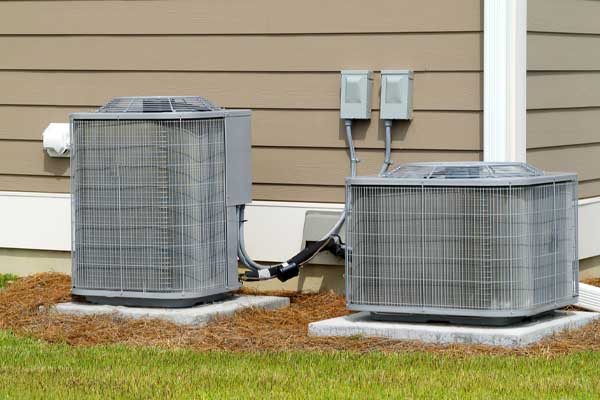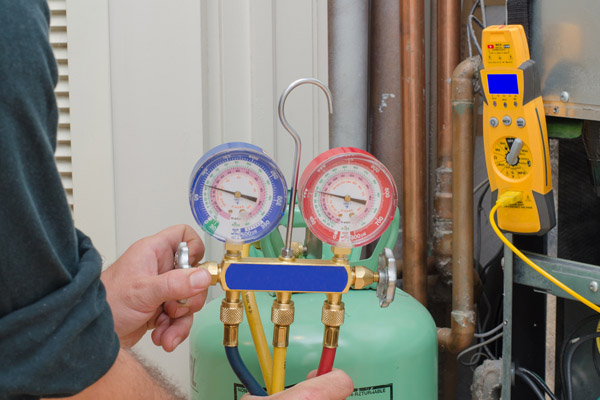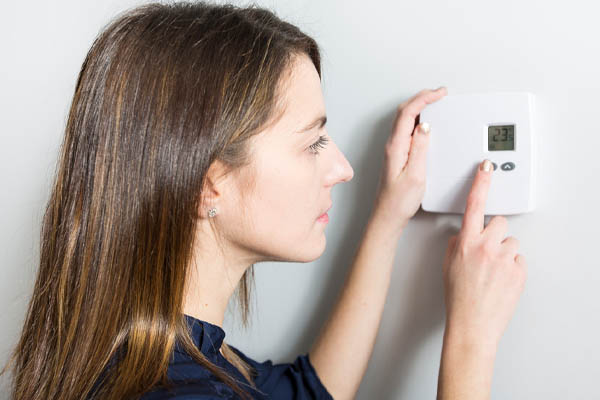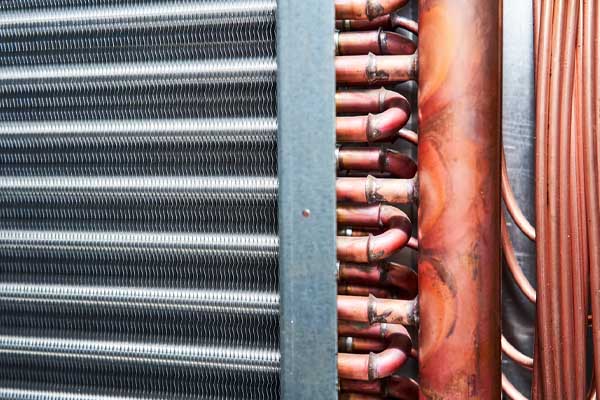Contents
- 1 How Does My Air Conditioner Cool My Home?
- 2 Parts of an Air Conditioning System
- 3 The Typical Cooling Process Inside an Air Conditioner
- 3.1 Step 1: The Thermostat Detects that the Space is Too Hot
- 3.2 Step 2: The Refrigerant Pulls in Heat from the Indoor Air
- 3.3 Step 3: The Blower Pushes Cold Conditioned Air into the Home
- 3.4 Step 4: The Heat Absorbed by the Refrigerant is Discharged Outdoors
- 3.5 Step 5: The Blower Pushes Out the Hot Air Surrounding the Coils
- 3.6 Step 6: The Colder Refrigerant is Ready to Go Back to the Indoor Unit
- 3.7 Conclusion
- 4 Call Wilcox Energy for All Your HVAC Requirements

We seek relief from the air conditioner whenever the home gets too hot. With a few clicks and a little patience, the A/C makes the mercury drop to bring us comfort. It is difficult to imagine life without this useful piece of modern technology. With a cooling system, we can get through the peak of summer without suffering from heat stroke. We can work fine all day and sleep soundly all night. If our ancestors could see one of these units, then they might think that it was a magical box that could change the environment. Of course, we all know that it is simply a product of scientific innovation. In this article, we answer the question, “How does an air conditioner work?”.
How Does My Air Conditioner Cool My Home?
If you are keen to learn about how your air conditioning unit can do what it does, then read on to find out all about the process.
Parts of an Air Conditioning System
Let’s begin by enumerating the most important parts of an air conditioning system and discussing each of their roles. Below, we focus on the refrigerant, the evaporator coils, the condenser coils, and the compressor.
1. Air Conditioner Refrigerant

The refrigerant is a heat-absorbing chemical that flows across the system. The refrigerant is to an air conditioner what the blood is to the human body. Instead of carrying oxygen and nutrients to the cells, refrigerant carries heat to the coils. It changes state from liquid to gas and back again as it goes through a complete cycle.
2. Evaporator Coils Of The Cooling System
Inside the indoor air handler is the evaporator coils that directly interact with the home environment by soaking up heat into the cold refrigerant. Periodic cleaning is necessary to keep heat absorption high and maintain energy efficiency. Homeowners should also replace the air filters every 2-3 months to help with this. However, some homes require more frequent air filter replacements. Therefore, check monthly and replace when necessary.
3. Air Conditioner Condenser Coils
The refrigerant eventually leaves the evaporator coils and moves onto the condenser coils where it interacts with the outdoor environment this time. It releases the heat it has gathered so far. Just like the evaporator coils, the condenser coils need regular cleaning due to dirt and debris. A springtime professional air conditioner tune-up will make it ready for the summer.
4. Compressor of Air Conditioning System
Just like the heart, the compressor is a pump that enables the continuous circulation of the refrigerant throughout the system.
The Typical Cooling Process Inside an Air Conditioner
Step 1: The Thermostat Detects that the Space is Too Hot

It’s a hot summer day. You have just returned home after spending hours outside. You’re sweaty and eager to cool down. Nobody was inside so the thermostat was set to a higher temperature when you got in. You immediately go to the thermostat, enter your desired temperature, and wait for the air conditioner to get to work. Sensors in the thermostat will detect that the home is much warmer than your preferred setting, so it will trigger the HVAC system to begin the cooling cycle. You may hear the compressor and the fans start to hum. The refrigerant is now flowing through the system.
Step 2: The Refrigerant Pulls in Heat from the Indoor Air
The refrigerant will make its way to the evaporator coils where it chills up the copper tubes with its low temperature. Heat in the air will get absorbed by the coils and the refrigerant. Indoor air that losses heat will gradually get cold. It may not be enough to reach the settings right away, but the system can always add another cycle until the goal is achieved. Meanwhile, water vapor in the vicinity of the cold coils will condense into liquid, effectively reducing humidity. Don’t worry about the water because a tray will collect all the condensation and channel it outside to prevent overflow.
Step 3: The Blower Pushes Cold Conditioned Air into the Home
The cold air around the evaporator coil won’t be of much use if it stays there. The indoor fan will push it out of the unit and into the home so that you can enjoy the cooling effect. If you have a central air conditioning setup, then the blower will push the cold air through the ductwork into every room. For mini-split systems, the indoor air handler will blow cold air directly into the room. Modern installations often feature the latter because it makes it possible to enter different settings in different zones around the house, ensuring greater comfort.
Step 4: The Heat Absorbed by the Refrigerant is Discharged Outdoors

Although refrigerants can absorb a large amount of heat, they have an upper limit beyond which they become ineffective. Hot refrigerant must then travel to the next stage of the cycle, in which it goes to the condenser coils to release heat. If the substance is hotter than the outdoor environment, then heat will flow from the system to the outdoors.
Step 5: The Blower Pushes Out the Hot Air Surrounding the Coils
Simply relying on the hot condenser coils will make heat transfer go slow. That is why fans are installed in the outdoor unit to blow air through the coils. The surroundings will grow warmer while the coils will get a bit cooler. This won’t be too bad for the outdoors because the wind will blow the hot air away from the house. Just let the A/C release as much heat as it needs to improve indoor conditions.
Step 6: The Colder Refrigerant is Ready to Go Back to the Indoor Unit
The heat has been expelled and the refrigerant has cooled down. The compressor will push the refrigerant back indoors for another round of heat absorption. The cycle can continue indefinitely. It will only stop when the thermostat detects that the indoor temperature and the user settings match. It usually takes several minutes to achieve this. Once it stops, it will keep monitoring the indoor temperature and spring into action if it gets warm again.
Conclusion
It is wrong to think that air conditioners create cold air out of nothing. The reality is that the air has always been there. They simply transfer heat from the indoors to the outdoors using the refrigerant and the coils. It is a gradual process that affects both the temperature and humidity. Modern systems still use the same principle while improving energy efficiency.
Call Wilcox Energy for All Your HVAC Requirements

Wilcox Energy is the leading heating and cooling service provider in the southern Connecticut shoreline. With the most qualified technicians at your doorstep, you can be certain of worry-free installations, replacements, repairs, and tune-ups.
Wilcox Energy keeps the service rates reasonable so that finances don’t get in the way of your comfort. If you need dependable HVAC experts, then give us a call. We offer affordable solutions to every problem. We offer free in-home estimates.
For more information about heating and cooling systems, be sure to contact Wilcox Energy. You can contact us at (860) 399-6218. We offer a full line of heater and air conditioner repairs, maintenance services, and installations.
